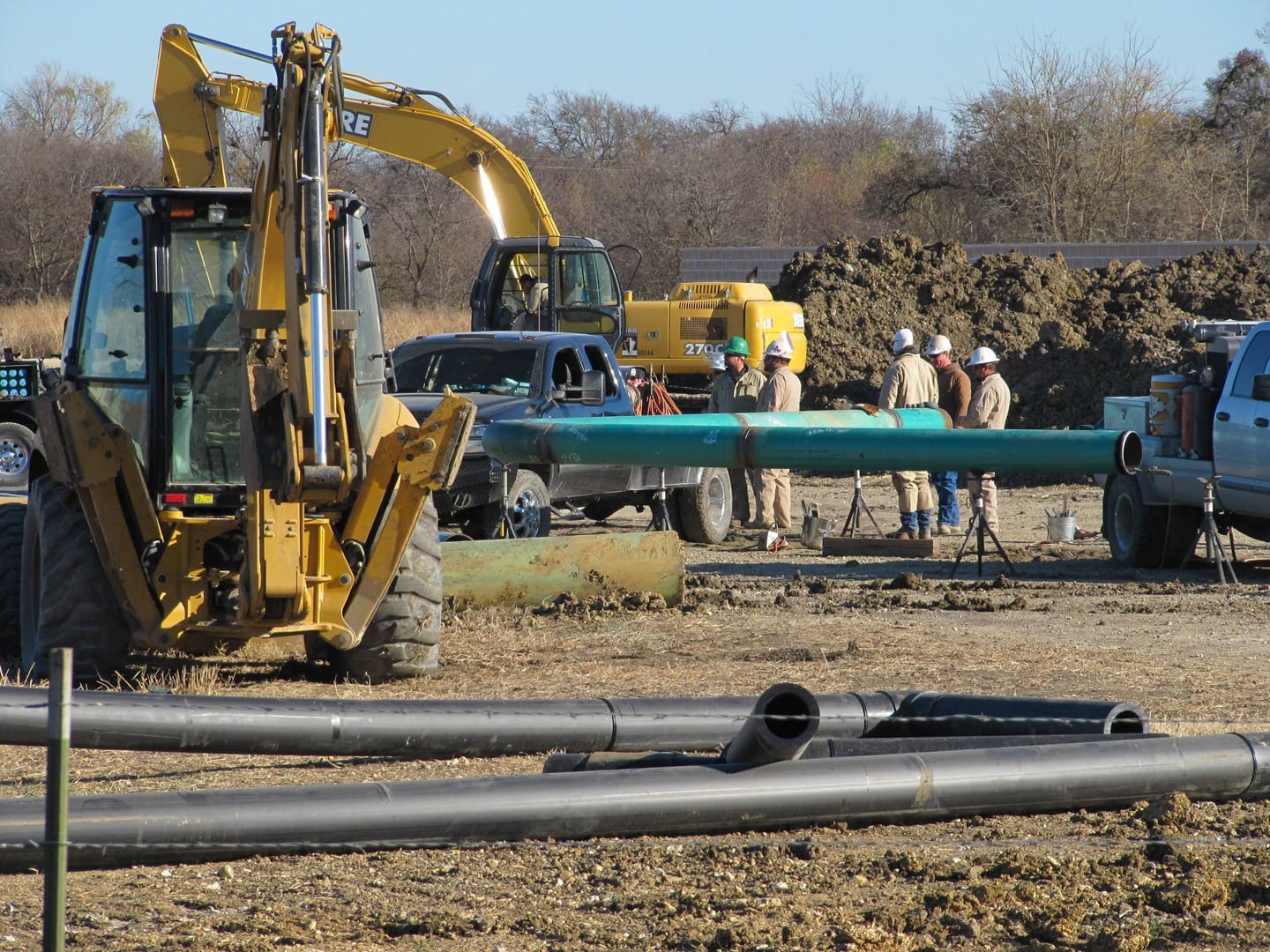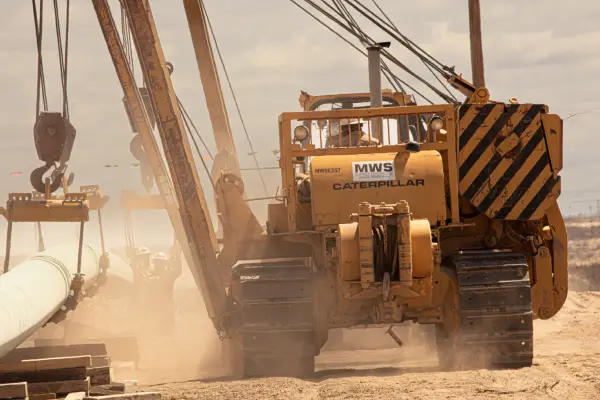Checking Out the current Advancements in Pipeline Construction Services for Modern Projects
The Pipeline Construction industry is undergoing substantial changes. Developments such as wise products and robotics are reshaping traditional techniques. These improvements guarantee to improve efficiency and safety and security. In addition, AI technologies are enhancing project management capacities. As these elements merge, they increase questions about their long-lasting effect on sustainability and expense. Comprehending these technologies is important for stakeholders aiming to navigate this developing landscape. What implications do they hold for future projects?
The Increase of Smart Materials in Pipeline Construction
As the demand for more reliable and lasting Pipeline systems increases, the combination of wise products has become a transformative option in Pipeline Construction. These sophisticated products possess special homes that enhance the performance and long life of pipes. As an example, self-healing polymers can immediately fix small leakages, significantly minimizing upkeep prices and downtime. In addition, materials embedded with sensors can monitor architectural integrity and environmental conditions, permitting real-time data collection and evaluation.
Additionally, wise materials are corrosion-resistant and often lightweight, which not only simplifies setup but likewise extends the life expectancy of the systems. Their versatility allows pipes to hold up against severe environmental problems, advertising safety and dependability. As markets significantly prioritize sustainability, using green wise materials adds to minimized ecological impact. Overall, the increase of clever materials notes a notable shift in Pipeline Construction, leading the way for ingenious solutions to meet contemporary infrastructure needs.
Developments in Robotics for Installment and Maintenance
The assimilation of smart products in Pipeline Construction is complemented by advancements in robotics, which are reinventing setup and upkeep procedures. Robot modern technologies, such as automated welding systems and drones, enhance efficiency and accuracy, decreasing human error and decreasing security threats. These robotics can operate in difficult environments, making certain that installations are performed in hazardous or remote areas without placing employees at danger.
Furthermore, robot examination devices equipped with advanced sensors give real-time data on Pipeline stability, permitting aggressive maintenance. They can spot leaks or structural weaknesses, allowing timely interventions that prolong the life expectancy of Pipeline systems. Using robotics not only accelerates the Construction timeline but also maximizes source allocation, resulting in cost financial savings. As these modern technologies remain to progress, they are readied to play an essential role fit the future of Pipeline Construction, ensuring integrity and sustainability in infrastructure development.
AI-Driven Job Monitoring Devices Changing Workflow
AI-driven project management tools are reshaping operations in Pipeline Construction by enhancing decision-making processes via improved access to real-time data analytics. These tools enable teams to react quickly to job developments, consequently boosting effectiveness. Streamlined interaction channels foster partnership amongst stakeholders, even more enhancing project end results.
Boosted Decision-Making Procedures

Real-Time Information Analytics
Utilizing real-time data analytics, modern task management devices revolutionize process in Pipeline Construction. These innovative tools leverage man-made intelligence to supply rapid understandings into task efficiency, resource allocation, and potential risks. By continuously monitoring key efficiency signs, teams can swiftly adjust to transforming conditions, maximizing labor and materials use. The integration of real-time information allows for even more informed decision-making, lowering delays and reducing expenses. In addition, predictive analytics can identify fads and projection difficulties before they rise, boosting overall job efficiency. As a result, Pipeline Construction firms that embrace these AI-driven devices can enhance job timelines and end results, guaranteeing they remain competitive in a significantly complicated sector landscape. This technology marks a substantial change towards data-centric monitoring methods.
Streamlined Interaction Networks
Efficient interaction is critical in Pipeline Construction, where many stakeholders must team up seamlessly to guarantee job success. The introduction of AI-driven project monitoring devices has actually changed communication networks within the industry. These tools facilitate real-time information sharing, enabling groups to gain access to updates, share papers, and track development efficiently. By automating regular jobs and providing a centralized platform for communication, these advancements eliminate misunderstandings and reduce hold-ups. Enhanced visibility into project timelines and resource allowance fosters accountability amongst group members. Additionally, AI analytics can recognize potential interaction spaces, making sure aggressive problem-solving. Ultimately, streamlined communication networks not only boost process yet also raise general job performance, making it possible for Pipeline Construction firms to fulfill modern needs properly.
Enhanced Safety And Security Protocols With Technology Combination
The assimilation of innovation in Pipeline Construction has actually resulted in improved safety and security methods. Real-time tracking systems, wearable security gadgets, and automated risk evaluations are now vital elements in lessening hazards on task sites. These innovations not just improve navigate to this website worker security but also simplify compliance with sector policies.
Real-Time Surveillance Solutions
Exactly how can real-time monitoring systems transform Pipeline Construction safety protocols? By integrating sophisticated technology, these systems offer continuous monitoring of Construction activities, making certain immediate detection of potential dangers. Sensors and electronic cameras can keep an eye on environmental conditions, equipment efficiency, and workforce motions, supplying important data in real time. This aggressive technique enables job supervisors to identify threats before they escalate, greatly improving precaution on-site. Additionally, real-time surveillance promotes conformity with governing needs, making sure that safety requirements are met consistently. The capacity to analyze data instantaneously supports informed decision-making, making it possible for prompt interventions. As a result, Pipeline Construction jobs can run more efficiently while protecting the health of workers and decreasing crashes, therefore reinventing the industry's safety landscape.
Wearable Security Gadgets
Often, wearable security tools are being incorporated right into Pipeline Construction to improve safety and security methods. These cutting-edge devices, consisting of clever headgears, vests, and wristbands, are developed to check worker wellness and environmental problems in real-time. Equipped with sensors, these devices can identify hazards such as toxic gas direct exposure, excessive warmth, or high noise degrees, supplying immediate signals to supervisors and employees. Furthermore, wearable innovation often includes GPS tracking functions, enabling effective place surveillance of personnel on-site. This capacity not just help in fast reaction during emergencies however likewise enhances total job management. By focusing on worker safety via innovation combination, Pipeline Construction companies are making considerable strides in reducing crashes and promoting a culture of safety and security within the sector.

Automated Risk Assessments
While typical danger evaluations typically depend on manual evaluations, the combination of automated danger assessment technologies is changing safety methods in Pipeline Construction. These innovative systems leverage information analytics, expert system, and maker knowing to identify potential hazards much more properly and successfully. By continually keeping track of environmental conditions, tools status, and employee habits, automated evaluations give real-time understandings that boost decision-making. This aggressive strategy minimizes the chance of mishaps and improves conformity with safety laws. Furthermore, automated danger assessments can be updated promptly, ensuring that all stakeholders have access to the most up to date details. Consequently, Pipeline Construction jobs gain from a safer work atmosphere, lessening disruptions and fostering a society of safety through technology combination.
Lasting Practices in Pipeline Construction
As the need for power infrastructure rises, the Pipeline Construction sector significantly focuses on sustainable methods that decrease environmental impact. Business are embracing environment-friendly products and innovative Construction strategies to reduce their carbon footprint. As an example, using trenchless innovation permits Pipeline installment with minimal disturbance to the surrounding environment, maintaining all-natural habitats and decreasing dirt disintegration.
In addition, the execution of renewable power resources, such as solar or wind, to power Construction activities is acquiring grip. This shift not just reduces dependence on fossil gas but additionally improves the general sustainability of Pipeline jobs. Efficient waste monitoring practices, consisting of recycling and reusing products, are becoming criterion in the industry.
Real-Time Tracking and Anticipating Maintenance Solutions
The shift in the direction of lasting techniques in Pipeline Construction has led the method for the combination of real-time tracking and predictive upkeep options. These technologies utilize advanced sensing units and information analytics to constantly assess Pipeline honesty and functional efficiency. By accumulating information in genuine time, drivers can discover abnormalities such as leaks or stress decreases before they intensify right into serious problems. This aggressive strategy not only minimizes environmental risks yet likewise reduces downtime and maintenance costs.
Predictive maintenance uses algorithms to forecast possible failures based on historic information and current efficiency metrics. This enables prompt interventions, maximizing upkeep timetables and source allowance. In general, real-time monitoring and predictive upkeep options stand for a substantial improvement in Pipeline Construction, boosting safety and integrity while sustaining sustainability objectives. As industries remain to embrace these innovations, the operational landscape of Pipeline management is readied to advance substantially, making sure long-lasting feasibility and performance.
The Function of Drones in Checking and Inspection
Drones have actually arised as transformative devices in the surveying and examination of pipelines, offering boosted effectiveness and accuracy. Their ability to capture high-resolution images and videos from different angles enables extensive analyses of Pipeline integrity without risking human security. Equipped with sophisticated sensors and thermal imaging capacities, drones can spot leakages, rust, and architectural abnormalities that go now may not show up to the nude eye.
The deployment of drones considerably reduces assessment time, enabling quicker decision-making for upkeep and repair work. This efficiency equates to cost savings and minimal interruption to bordering settings. Drones can additionally access hard-to-reach areas, such as raised frameworks or sturdy terrains, better expanding the range of assessments.
As the Pipeline sector remains to embrace technical developments, the combination of drones right into evaluating and evaluation processes is expected to grow, establishing new criteria for functional excellence and safety and security in Pipeline Construction services.
Often Asked Questions
What Are the Expenses Related To Modern Pipeline Construction Innovations?
The prices related to contemporary Pipeline Construction technologies often consist of innovative materials, specialized labor, and advanced innovation. These variables add to greater initial financial investment, yet can lead to long-lasting financial savings with boosted performance and minimized upkeep requirements.
How Do Regulative Modifications Effect Pipeline Construction Technologies?
Governing adjustments significantly affect Pipeline Construction modern technologies by requiring the fostering of more secure, more effective approaches. Conformity requirements usually drive innovation, leading to improvements in materials, design, and Construction techniques that boost total job sustainability and safety.
What Skills Are Required for Professions in Advanced Pipeline Construction?

Occupations in advanced Pipeline Construction need expertise in engineering concepts, task monitoring, safety and security methods, and environmental laws. Additionally, skills in technology integration, teamwork, and More hints problem-solving are necessary for passing through the complexities of modern-day facilities projects.
How Can Companies Make Certain Conformity With Environmental Requirements?
To guarantee conformity with environmental criteria, companies need to apply strenuous training programs, carry out normal audits, and take on ideal methods in sustainability. Involving with stakeholders and checking regulatory changes additionally reinforces their dedication to environmental stewardship.

What Are the Trick Obstacles Dealing With Pipeline Construction Today?
The essential difficulties facing Pipeline Construction today consist of regulative conformity, ecological concerns, rising and fall product prices, labor scarcities, and the requirement for advanced innovation assimilation (Pipeline Construction Services). These variables complicate job timelines and general performance in the sector
As the demand for a lot more effective and lasting Pipeline systems increases, the combination of smart products has actually emerged as a transformative service in Pipeline Construction. AI-driven job administration tools are reshaping workflows in Pipeline Construction by enhancing decision-making processes through enhanced access to real-time data analytics. While project monitoring in Pipeline Construction has actually traditionally depended on manual processes, the integration of innovative tools greatly enhances decision-making abilities. Harnessing real-time information analytics, modern job management tools revolutionize operations in Pipeline Construction. Professions in advanced Pipeline Construction call for proficiency in design principles, project monitoring, safety and security procedures, and ecological laws.